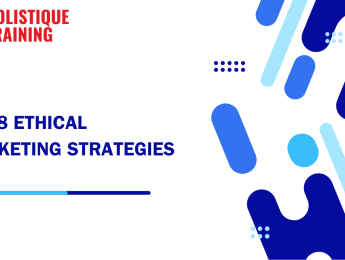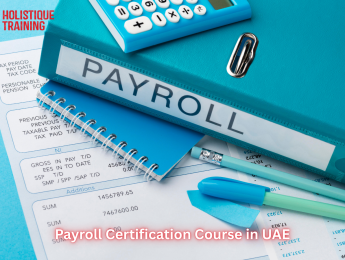- Table of Contents
- Strategy 1: Transparency in Advertising
- Strategy 2: Inclusive Marketing
- Strategy 3: Sustainable Marketing Practices
- Strategy 4: Data Privacy and Consumer Trust
- Strategy 5: Authentic Brand Storytelling
- Strategy 6: Social Responsibility Initiatives
- Strategy 7: Fair Trade and Ethical Sourcing
- Strategy 8: Responsible Influencer Marketing
- Challenges and Future Trends in Ethical Marketing
- Emerging Trends to Watch in Future
Introduction
Ethical marketing, a practice centered on promoting products and services with integrity, transparency, and social responsibility, is becoming increasingly crucial in 2025. As consumers become more discerning and demand higher standards from brands, ethical marketing provides a way for companies to align their business practices with their values and those of their audience. This article explores the top eight ethical marketing strategies that are shaping the industry this year, highlighting their importance, examining their impact on consumer trust and brand loyalty, and offering practical insights for implementing these strategies effectively.
Strategy 1: Transparency in Advertising
Transparency in advertising refers to the practice of being open, honest, and clear with consumers about all aspects of a product or service. It involves providing accurate information, avoiding deceptive practices, and ensuring that all marketing communications are truthful and clear. The importance of transparency in advertising has grown significantly in 2025, as consumers are more informed and skeptical of marketing messages. They demand authenticity from brands and are quick to call out those that attempt to mislead or manipulate. Transparency not only builds trust but also strengthens the relationship between a brand and its customers, leading to long-term loyalty and brand advocacy.
Several brands have successfully embraced transparency in their advertising strategies. For example, Patagonia is known for its open communication about the environmental impact of its products, even when the news isn't entirely positive. This honesty has solidified its reputation as a leader in sustainable business practices. Everlane is another brand that practices "Radical Transparency" by breaking down the costs of production for each of its products and sharing this information with customers. These brands demonstrate that transparency can be a powerful tool in building consumer trust and loyalty.
To implement transparency in your marketing, consider the following approaches:
- Provide Clear Product Information: Ensure that all product descriptions, labels, and advertisements are accurate and easy to understand. Avoid exaggerating benefits or making unfounded claims.
- Be Honest About Pricing: Break down the cost components of your products and services, and explain how pricing is determined. This can include sharing details about materials, labor, and shipping costs.
- Address Mistakes Openly: If your brand makes a mistake, acknowledge it publicly, apologize, and explain the steps being taken to rectify the situation. This can turn a potential crisis into an opportunity to demonstrate integrity.
- Offer Behind-the-Scenes Insights: Share information about your supply chain, manufacturing processes, or business practices. This can include the ethical sourcing of materials, labor practices, or environmental impact.
- Engage in Open Dialogue with Consumers: Encourage customer feedback and respond to it transparently. Use social media, customer reviews, and other platforms to engage in honest conversations with your audience.
By implementing these practices, brands can foster a culture of transparency that resonates with modern consumers, ultimately leading to stronger, more trusting relationships and a more sustainable business model.
Strategy 2: Inclusive Marketing
Inclusive marketing is the practice of creating content, messaging, and campaigns that reflect the diversity of the target audience, including factors such as race, gender, age, religion, ability, and socioeconomic status. It aims to ensure that all individuals feel represented and valued, avoiding stereotypes or exclusionary practices. In 2025, inclusivity in marketing is not just a trend but a necessity, as consumers increasingly expect brands to reflect the real-world diversity of their customers. Inclusive marketing helps build deeper connections with a wider audience, fosters brand loyalty, and demonstrates a commitment to social responsibility.
Several brands have successfully executed inclusive marketing campaigns. Dove has long been recognized for its "Real Beauty" campaign, which features women of various ages, sizes, and ethnicities, challenging traditional beauty standards. This approach has resonated with a broad audience and reinforced Dove's brand message of self-acceptance and inclusivity. Nike is another brand that consistently champions inclusivity, particularly through its campaigns that celebrate athletes from diverse backgrounds and highlight stories of perseverance and resilience across different communities. These campaigns show that inclusivity can not only enhance a brand's image but also create meaningful connections with consumers.
To create inclusive content, consider these best practices:
- Reflect Real-World Diversity: Ensure that your marketing materials feature a diverse range of people, including different races, genders, body types, ages, and abilities. Representation should be authentic and avoid tokenism.
- Avoid Stereotypes: Be mindful of the language, imagery, and narratives used in your campaigns. Avoid reinforcing harmful stereotypes or making assumptions about any group.
- Engage with Diverse Voices: Involve individuals from different backgrounds in the creation of your marketing content, whether through focus groups, consultations, or collaborations. This helps ensure that your messaging resonates with a broad audience.
- Be Culturally Sensitive: Understand and respect cultural nuances when marketing to different communities. Ensure that your messaging is appropriate and respectful, and be willing to learn from feedback.
- Promote Accessibility: Make your marketing content accessible to everyone, including those with disabilities. This can include providing captions for videos, ensuring website accessibility, and using inclusive language that resonates with all.
By adopting these practices, brands can create marketing campaigns that resonate with diverse audiences, foster a sense of belonging, and strengthen their reputation as socially responsible and inclusive organizations.
Strategy 3: Sustainable Marketing Practices
Sustainable marketing practices involve promoting products, services, and brand values that prioritize environmental responsibility and long-term ecological balance. As concerns about climate change and environmental degradation intensify, the demand for eco-friendly products and corporate accountability has grown significantly. In 2025, sustainable marketing has become a key differentiator for brands, with consumers actively seeking out companies that demonstrate a genuine commitment to sustainability. This shift has led to the rise of eco-friendly campaigns that not only highlight a brand's sustainable practices but also encourage consumers to make environmentally conscious choices.
The rise of eco-friendly campaigns is evident in the strategies of leading brands. IKEA has embraced sustainability as a core element of its brand identity, with campaigns focused on promoting products made from recycled materials, energy-efficient designs, and a commitment to becoming climate-positive by 2030. Unilever has also been at the forefront of sustainable marketing, particularly through its brands like Ben & Jerry's and Dove, which emphasize social and environmental responsibility in their messaging. These brands demonstrate that sustainability is not just a buzzword but a critical aspect of modern marketing that can drive consumer loyalty and enhance brand value.
To incorporate sustainability into your brand, consider the following steps:
- Assess and Reduce Environmental Impact: Conduct an audit of your brand's environmental impact across all areas, including production, packaging, and distribution. Identify opportunities to reduce waste, lower carbon emissions, and conserve resources.
- Promote Sustainable Products and Practices: Highlight eco-friendly features in your products, such as sustainable sourcing, recyclable materials, or energy efficiency. Ensure that your marketing communicates these benefits clearly to consumers.
- Educate and Empower Consumers: Use your marketing platforms to educate consumers about sustainability and encourage them to make environmentally conscious choices. This can include tips on reducing waste, supporting sustainable products, or making greener lifestyle choices.
- Collaborate with Eco-Conscious Partners: Partner with organizations, suppliers, and influencers who share your commitment to sustainability. This can enhance the credibility of your sustainability efforts and expand your reach to like-minded audiences.
- Be Transparent About Sustainability Efforts: Clearly communicate your brand's sustainability goals, achievements, and challenges. Consumers value honesty and will appreciate brands that are transparent about their progress, even if it involves acknowledging areas that need improvement.
By implementing these steps, brands can position themselves as leaders in sustainability, appealing to environmentally conscious consumers and contributing positively to the planet. Sustainable marketing is not only a responsible choice but also a strategic advantage in the increasingly eco-aware marketplace of 2025.
Strategy 4: Data Privacy and Consumer Trust
Data privacy has become a cornerstone of consumer trust in the digital age, where vast amounts of personal information are collected, stored, and analyzed by companies. Ethical data collection and usage involve obtaining consumer data in a transparent manner, with explicit consent, and using it responsibly to enhance the customer experience without compromising their privacy. In 2025, consumers are more aware than ever of how their data is being used, and they expect brands to handle their information with the utmost care. Failing to do so can lead to a loss of trust, reputational damage, and even legal repercussions.
Building consumer trust through privacy is essential for brands that want to maintain strong, long-term relationships with their customers. One example is Apple, which has consistently emphasized its commitment to user privacy as a key differentiator in its marketing. By implementing features like App Tracking Transparency, Apple has positioned itself as a protector of consumer data, which has bolstered consumer confidence and loyalty. DuckDuckGo, a privacy-focused search engine, has also built its brand around the promise of never tracking users, proving that privacy can be a unique selling point in a crowded market.
To ensure data security and build consumer trust, consider these tools and techniques:
- Implement Clear Privacy Policies: Create transparent privacy policies that clearly outline how consumer data is collected, used, and shared. Ensure that these policies are easily accessible and written in plain language so that consumers can understand them.
- Obtain Explicit Consent: Always obtain clear, informed consent from consumers before collecting their data. This can be done through opt-in forms, cookie banners, and other mechanisms that require active participation from the user.
- Use Data Minimization: Collect only the data that is necessary for your business operations. Avoid gathering excessive or irrelevant information, as this reduces the risk of misuse or breach.
- Encrypt Sensitive Data: Use strong encryption methods to protect sensitive consumer data both at rest and in transit. Encryption ensures that even if data is intercepted, it cannot be easily accessed by unauthorized parties.
- Regularly Audit Data Practices: Conduct regular audits of your data collection, storage, and usage practices to ensure compliance with privacy regulations and identify potential vulnerabilities.
- Educate Employees on Data Security: Provide ongoing training for employees on data privacy and security best practices. This helps create a culture of security within your organization and reduces the risk of human error leading to data breaches.
By prioritizing data privacy and adopting these ethical practices, brands can build and maintain consumer trust, which is essential for long-term success in a digital world where privacy concerns are paramount.
Strategy 5: Authentic Brand Storytelling
Authentic brand storytelling is about creating genuine, relatable narratives that resonate with your audience on a deeper level. It involves telling stories that reflect the true values, mission, and culture of your brand, rather than fabricating or embellishing to fit a certain image. In 2025, consumers are increasingly savvy and can easily spot inauthentic marketing, making authenticity crucial for building trust and loyalty. Authentic brand storytelling allows consumers to connect with a brand’s purpose, leading to stronger emotional bonds and long-term engagement.
The importance of authenticity in brand narratives cannot be overstated. When a brand tells a story that genuinely reflects who they are, it creates a sense of transparency and trust. Authentic stories often highlight the challenges, triumphs, and human elements behind a brand, making them relatable to consumers. For example, TOMS has successfully built its brand around the authentic story of its "One for One" model, where every purchase leads to a donation to someone in need. This genuine commitment to social good has resonated deeply with consumers, helping TOMS establish itself as a purpose-driven brand. Another example is Airbnb, whose "Belong Anywhere" campaign focused on authentic experiences and personal stories of hosts and guests, highlighting the brand’s mission to create a sense of belonging. This approach not only reinforced the brand's core values but also connected emotionally with a global audience.
To craft genuine brand stories, consider the following tips:
- Know Your Brand’s Core Values: Start by understanding and defining your brand’s core values, mission, and purpose. These elements should be at the heart of your storytelling, guiding the narrative and ensuring it aligns with what your brand truly stands for.
- Highlight Real Stories and People: Use real stories from your customers, employees, or founders to illustrate your brand’s journey and impact. Authenticity shines through when the stories are real and relatable, rather than overly polished or scripted.
- Be Honest About Challenges: Don’t shy away from sharing the challenges or setbacks your brand has faced. Authentic stories often include both the highs and the lows, making them more relatable and credible to your audience.
- Showcase Your Brand’s Impact: Demonstrate how your brand is making a positive impact, whether through social responsibility initiatives, customer success stories, or community involvement. This helps to build a narrative that is both meaningful and authentic.
- Maintain Consistency Across Channels: Ensure that your brand’s story is consistent across all marketing channels, from social media to advertising to customer service. Consistency reinforces authenticity and helps build a cohesive brand identity.
- Engage with Your Audience: Encourage your audience to share their own stories related to your brand. User-generated content can add authenticity to your brand narrative and create a sense of community.
By embracing authentic brand storytelling, brands can create meaningful connections with their audience, fostering trust and loyalty that go beyond mere transactions. In a world where consumers value transparency and truth, authentic storytelling is a powerful strategy for building a lasting brand identity.
Strategy 6: Social Responsibility Initiatives
Social responsibility initiatives involve aligning a brand’s values and operations with social causes that contribute positively to society. This strategy goes beyond profit-making to include actions that address societal issues such as environmental sustainability, social justice, and community support. In 2025, consumers increasingly expect brands to take a stand on important social issues and demonstrate their commitment through tangible actions. By integrating social responsibility into their core values, brands can not only make a positive impact on the world but also build stronger connections with consumers who share those values.
Aligning brand values with social causes is a powerful way to differentiate a brand and connect with a purpose-driven audience. For instance, Ben & Jerry’s has consistently championed social justice issues, from climate change to racial equality, integrating these causes into its brand identity and product offerings. This alignment has resonated with consumers who appreciate the brand’s activism and commitment to making a difference. Similarly, Patagonia has made environmental sustainability a cornerstone of its brand, regularly donating to environmental causes and encouraging customers to reduce, reuse, and recycle. These examples illustrate how aligning with social causes can enhance a brand’s reputation and deepen consumer loyalty.
The impact of social responsibility on consumer loyalty is significant. Consumers are more likely to support brands that align with their personal values and demonstrate a genuine commitment to social issues. Brands that take a proactive approach to social responsibility can build a loyal customer base that not only purchases their products but also advocates for the brand and its mission. This loyalty is driven by the emotional connection that consumers feel when they see a brand contributing positively to causes they care about.
To implement effective cause marketing, consider the following strategies:
- Choose Causes That Align with Your Brand: Select social causes that align with your brand’s values, mission, and customer base. Authenticity is key, so focus on issues that your brand genuinely cares about and can make a meaningful impact on.
- Involve Customers in the Cause: Engage your customers in your social responsibility efforts by providing opportunities for them to participate, whether through donations, volunteering, or sharing their stories. This not only amplifies the impact but also strengthens the bond between your brand and its customers.
- Be Transparent About Your Impact: Clearly communicate how your brand is supporting social causes, including specific actions, donations, and outcomes. Transparency builds trust and ensures that consumers understand the real impact of their contributions.
- Integrate Social Responsibility into Your Business Model: Make social responsibility a core part of your business operations, not just a marketing campaign. This could involve sustainable sourcing, ethical labor practices, or corporate giving programs that are deeply embedded in your brand’s DNA.
- Partner with Relevant Organizations: Collaborate with nonprofits, NGOs, or other organizations that are experts in the social causes you’re supporting. These partnerships can enhance the credibility of your efforts and expand your reach.
By adopting these strategies, brands can effectively integrate social responsibility into their marketing efforts, driving both social impact and consumer loyalty. In a marketplace where consumers increasingly value purpose-driven brands, social responsibility initiatives are not just a moral obligation but a strategic advantage.
Strategy 7: Fair Trade and Ethical Sourcing
Fair trade and ethical sourcing are practices that prioritize the well-being of workers, communities, and the environment in the production and supply chain processes. Fair trade principles ensure that producers, particularly in developing countries, are paid fair wages and work in safe conditions, while ethical sourcing focuses on sourcing materials and products in a way that minimizes harm to people and the planet. In 2025, consumers are more conscious of where their products come from and the impact of their purchases, making fair trade and ethical sourcing essential components of a brand’s value proposition.
Understanding fair trade principles is crucial for brands that want to support sustainable development and promote social equity. Fair trade ensures that producers receive a fair price for their goods, which covers the cost of sustainable production and provides a living wage. It also emphasizes safe working conditions, environmentally sustainable practices, and community development. By adhering to these principles, brands contribute to a more equitable global trade system and empower producers in marginalized communities.
The benefits of ethical sourcing for brands extend beyond just meeting consumer expectations. Brands that practice ethical sourcing often enjoy enhanced reputations, stronger customer loyalty, and the ability to command premium prices for their products. For example, Tony’s Chocolonely has built its entire brand around the mission of eradicating slavery from the chocolate industry. By ensuring that its cocoa is sourced from farms that adhere to fair trade principles, the company has attracted a loyal customer base that values ethical consumption. Similarly, Patagonia is known for its commitment to ethical sourcing, ensuring that its materials are sustainably sourced and that workers are treated fairly throughout the supply chain. These practices have solidified Patagonia's position as a leader in sustainable and ethical business.
To ensure fair trade in your supply chain, consider the following steps:
- Partner with Certified Fair Trade Suppliers: Work with suppliers who are certified by recognized fair trade organizations. These certifications ensure that the suppliers adhere to fair trade principles, providing transparency and accountability in your supply chain.
- Conduct Regular Audits: Regularly audit your supply chain to ensure that all partners comply with fair trade and ethical sourcing standards. This includes assessing working conditions, wage practices, and environmental impact.
- Educate Your Team and Partners: Provide training for your team and supply chain partners on fair trade principles and ethical sourcing practices. This helps ensure that everyone involved understands the importance of these practices and how to implement them effectively.
- Communicate Your Commitment: Clearly communicate your brand’s commitment to fair trade and ethical sourcing to your customers. Use your marketing platforms to share stories from your supply chain, highlight the positive impact of fair trade, and demonstrate your transparency.
- Support Community Development: Go beyond fair wages by investing in community development projects that benefit the workers and their families. This could include funding education, healthcare, or infrastructure projects in the communities where your products are sourced.
By incorporating these steps, brands can build a fair and ethical supply chain that not only aligns with consumer values but also contributes to the global movement for social and environmental justice. Fair trade and ethical sourcing are not just about doing the right thing—they are about creating a sustainable business model that resonates with conscious consumers and ensures long-term success in a competitive marketplace.
Strategy 8: Responsible Influencer Marketing
Responsible influencer marketing is about collaborating with influencers who align with your brand’s values and uphold ethical standards in their content and partnerships. As influencer marketing continues to grow, consumers are becoming more discerning, expecting transparency, authenticity, and responsibility from both influencers and the brands they represent. In 2025, responsible influencer marketing is not just a trend but a necessity for maintaining trust and credibility in the eyes of increasingly aware and ethically-minded consumers.
Choosing ethical influencers is the first step in executing a responsible influencer marketing strategy. Ethical influencers are those who are transparent about their partnerships, maintain authenticity in their content, and prioritize the well-being of their audience over profits. When selecting influencers, brands should look for individuals who genuinely share their values and whose audience demographics align with the brand’s target market. For example, Lush Cosmetics often collaborates with influencers who are advocates for cruelty-free and vegan products, reflecting the brand’s commitment to ethical beauty standards. By partnering with influencers who are already passionate about the brand’s core values, Lush ensures that its marketing remains authentic and impactful.
The role of influencer transparency cannot be overstated in responsible influencer marketing. Transparency involves clearly disclosing sponsored content, being honest about product usage and reviews, and avoiding misleading claims. Consumers value honesty, and when influencers are transparent, it builds trust not only in them but also in the brands they promote. For instance, the #Ad and #Sponsored tags have become industry standards for disclosing paid partnerships, ensuring that followers are aware of the nature of the content. Brands that encourage and support transparency in their influencer collaborations are more likely to foster long-term relationships with both influencers and their audiences.
To ensure ethical collaborations with influencers, consider the following guidelines:
- Establish Clear Ethical Guidelines: Set clear expectations and ethical guidelines for influencers you partner with. This should include standards for transparency, authenticity, and alignment with your brand values. Make sure these guidelines are communicated and agreed upon before any collaboration begins.
- Prioritize Long-Term Relationships: Focus on building long-term relationships with influencers rather than one-off campaigns. Long-term partnerships allow influencers to develop a deeper connection with your brand, leading to more authentic and consistent messaging.
- Encourage Authentic Content: Give influencers creative freedom to produce content that feels natural and authentic to their audience. Rather than scripting their posts, trust them to communicate your brand’s message in their unique voice, which will resonate more genuinely with their followers.
- Monitor and Evaluate Collaborations: Regularly monitor influencer collaborations to ensure that they adhere to your ethical standards. Evaluate the impact of these partnerships not just in terms of reach and engagement, but also in terms of maintaining trust and integrity.
- Be Transparent About Compensation: Ensure that compensation for influencers is fair and transparent. This includes being upfront about payment terms, expectations, and the nature of the collaboration, which helps build trust between the brand and the influencer.
By adopting responsible influencer marketing practices, brands can create authentic, transparent, and ethical campaigns that resonate with today’s consumers. In a landscape where influencer trust is paramount, these practices not only protect a brand’s reputation but also contribute to building a loyal and engaged customer base that values ethical considerations in marketing.
Summary of Top 8 Ethical Marketing Strategies
Strategy | Overview | Key Actions |
1. Transparency in Advertising | Promoting honesty and openness in marketing messages. | Disclose sponsored content, avoid misleading claims, communicate openly about products and practices. |
2. Inclusive Marketing | Ensuring marketing efforts reflect diverse audiences and their needs. | Represent various backgrounds, create inclusive content, address diverse preferences. |
3. Sustainable Marketing Practices | Implementing eco-friendly and socially responsible marketing initiatives. | Use sustainable materials, support environmental causes, reduce waste. |
4. Data Privacy and Consumer Trust | Protecting consumer data and ensuring privacy in marketing practices. | Adhere to ethical data collection, be transparent about data use, implement strong security measures. |
5. Authentic Brand Storytelling | Crafting genuine and relatable brand narratives. | Share true stories, reflect brand values, maintain transparency and authenticity. |
6. Social Responsibility Initiatives | Aligning brand values with social and environmental causes. | Support relevant causes, engage with communities, communicate impact transparently. |
7. Fair Trade and Ethical Sourcing | Ensuring ethical practices in sourcing and trade. | Partner with certified suppliers, conduct audits, support community development. |
8. Responsible Influencer Marketing | Collaborating with influencers who adhere to ethical standards. | Choose ethical influencers, ensure transparency in partnerships, build genuine relationships. |
Challenges and Future Trends in Ethical Marketing
Potential Challenges in Ethical Marketing
- Consumer Skepticism: Despite growing awareness and demand for ethical marketing, consumers may remain skeptical about brands' true intentions. Greenwashing, where companies exaggerate or falsify their environmental efforts, and ethical claims without substantial action can lead to mistrust and backlash. Overcoming this skepticism requires genuine commitment and transparent communication from brands.
- Implementation Costs: Adopting ethical practices often involves higher costs, whether through sourcing sustainable materials, investing in fair trade certifications, or supporting social responsibility initiatives. Small and medium-sized businesses may find these costs prohibitive, making it challenging to compete with larger brands that have more resources.
- Regulatory Compliance: As ethical marketing practices evolve, so do regulations and standards. Staying compliant with varying laws and guidelines across different regions can be complex and resource-intensive. Brands must continuously update their practices to adhere to legal requirements and avoid potential penalties.
- Balancing Profit and Purpose: Integrating ethical practices into business operations can sometimes conflict with short-term profit goals. Brands need to find a balance between maintaining profitability and upholding their ethical commitments. This can be particularly challenging in competitive markets where cost pressures are high.
- Ensuring Authenticity: Maintaining authenticity in ethical marketing is crucial yet challenging. Brands must ensure that their ethical claims are backed by genuine actions and not just superficial gestures. Authenticity is key to building and maintaining consumer trust, and any discrepancies between a brand’s messaging and its actual practices can lead to negative consequences.
Emerging Trends to Watch in Future
- Increased Focus on Circular Economy: The circular economy model, which emphasizes recycling, reusing, and reducing waste, is becoming a major trend in ethical marketing. Brands are exploring ways to close the loop in their supply chains, such as designing products for longer life cycles, implementing take-back schemes, and using recycled materials. This approach aligns with growing consumer demand for sustainable products and practices.
- Integration of Technology and Ethics: Advances in technology, such as blockchain, are being used to enhance transparency and traceability in ethical marketing. Blockchain can verify the authenticity of ethical claims, track the supply chain, and ensure that ethical standards are met. Brands are increasingly leveraging technology to provide verifiable proof of their ethical practices.
- Rise of Purpose-Driven Brands: Consumers are increasingly supporting brands with a clear social or environmental mission. Purpose-driven brands that integrate social responsibility into their core values and business models are gaining traction. This trend is leading to a rise in brands that not only focus on profit but also strive to make a positive impact on society.
- Ethical Influencer Partnerships: Ethical influencer marketing is set to become more prevalent, with brands seeking partnerships with influencers who align with their values and demonstrate genuine commitment to ethical practices. Consumers are looking for authenticity and transparency in influencer collaborations, driving brands to prioritize ethical considerations when selecting influencers.
- Personalization and Privacy: As brands collect more data to personalize marketing efforts, balancing personalization with data privacy is becoming crucial. Ethical marketing will involve not only respecting consumer privacy but also being transparent about data usage and ensuring that data collection practices are ethical and secure.
- Community-Centric Marketing: Brands are increasingly focusing on community-centric marketing, which involves engaging with and supporting local communities. This trend includes initiatives such as supporting local businesses, investing in community development projects, and creating marketing campaigns that highlight local stories and voices.
By addressing these challenges and embracing emerging trends, brands can navigate the evolving landscape of ethical marketing, build stronger relationships with consumers, and contribute to a more sustainable and equitable future.
Conclusion
In the future, ethical marketing has emerged as a vital component of successful brand strategy, driven by a growing consumer demand for transparency, responsibility, and genuine commitment to social and environmental causes. We’ve explored the top eight ethical marketing strategies: Transparency in Advertising, Inclusive Marketing, Sustainable Marketing Practices, Data Privacy and Consumer Trust, Authentic Brand Storytelling, Social Responsibility Initiatives, Fair Trade and Ethical Sourcing, and Responsible Influencer Marketing. Each strategy plays a crucial role in building trust, fostering loyalty, and differentiating brands in a competitive landscape. By embracing these strategies, brands not only enhance their reputations but also contribute positively to society and the environment. As we move forward, the importance of maintaining ethical practices in marketing will only increase, reinforcing the need for brands to remain committed to ethical principles in their operations and communications.

























